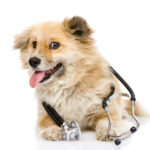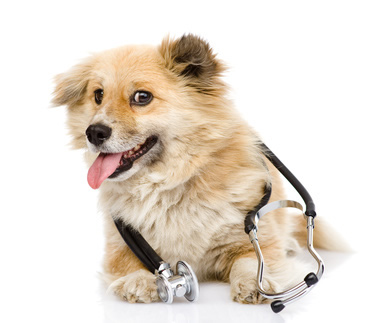It is easy to spot respiratory disorders in dogs. Normally, a dog breathes through his mouth and pants only when he is hot or after exertion. If the pattern changes, or he develops a cough, consult your vet.
Symptoms of Respiratory Disorder
- Nasal discharge (on one or both sides – watery, white or green, or bloody)
- Sneezing or honking (reverse sneezing)
- Painful, one-sided facial swelling, which may affect the eye on that side
- Noisy breathing
- Difficulty breathing, with increased chest movements
- Poor exercise tolerance
- Cough
- Bluish tinge to gums (indicating shortage of oxygen in blood, due to reduced lung function)
Inhaled Foreign Body
Sniffing is what dogs do, and if they inhale an object, they usually expel it by sneezing. However, something like a grass awn in a nostril can be on a one-way journey.
Despite paroxysms of sneezing, the awn may move through the nasal chamber, scratching the delicate lining. The first sign of trouble may be a discharge, initially colorless but becoming thick and white or green as bacteria move in. It is therefore important to remove the awn as soon as possible.
The vet may be able to see a foreign body through an auroscope inserted into the nostril; otherwise, under general anesthetic, the object may be located through a fine endoscope passed down the dog’s nose, and then removed.
Kennel Cough
This h ighly contagious disorder is usually a viral infection, although it can also be caused by Bordetella bronchiseptica, a common secondary bacterial invader.
ighly contagious disorder is usually a viral infection, although it can also be caused by Bordetella bronchiseptica, a common secondary bacterial invader.
Kennel cough spreads readily between dogs, especially if they are housed together, such as in kennels and at dog shows; animals in a multi-dog household are also vulnerable.
The dog may seem well, apart from coughing up white frothy sputum, or he may be lethargic with a fever. For viral infections, treatment is aimed at relieving illness and the dog should be isolated until coughing stops, to prevent the spread of infection. Antibiotics are used only for bacterial infections.
Honking
In some dogs the soft palate (the flexible tissue at the back of the mouth) is longer than normal, which can result in it being inhaled into the airway. When this happens, the dog makes a characteristic honking sound as he tries to catch his breath until the airway clears.
Excitement and exertion are common triggers, as is an allergic reaction to pollen. Corrective surgery may be needed if honking is a persistent problem.
Laryngeal Paralysis
This disorder of the larynx (voice box) occurs from middle age onward in any type of dog but often in Labradors and Golden Retrievers. There is noisy breathing, often with a hoarse cough, an altered bark, reduced ability to exercise, and sometimes severe difficulty breathing.
Laryngeal paralysis can develop for no apparent reason, but may occur if a neck or chest injury causes damage to the nerves controlling the larynx, and is sometimes an effect of an underactive thyroid.
Any underlying cause should be treated if possible. Corticosteroids can sometimes improve the problem. Surgery to reduce breathing difficulties is high risk.
Lung Disorders
Diseases of the lungs can include bronchitis (especially in older dogs), pneumonia, tumors, and fluid buildup due to heart failure. Such problems restrict lung function, causing the dog to breathe more rapidly and noisily and/or develop a cough.
X-rays are often used to diagnose lung disorders and can sometimes be carried out without sedation, an important factor if a dog is having difficulty breathing.
If it is necessary to examine the airway directly, for example if a trapped foreign body is suspected, then an endoscope may be passed down under general anesthetic.
Many lung disorders respond to drug treatment. It may be possible to surgically remove a single lung tumor, but multiple secondary growths, usually a sign of advanced cancer, are likely to be inoperable.
Preventing the Spread of Respiratory Disease
The spread of diseases passed on by infected droplets can be prevented by quickly isolating a dog who is coughing or is
known to have been in contact with a coughing dog. Vaccination may provide some protection against kennel cough, depending on the specific bacteria or virus.

